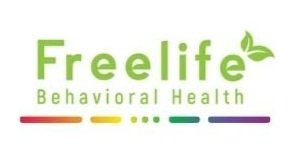What Is PrEP? A Powerful Tool for HIV Prevention
If you’ve heard the term PrEP floating around but aren’t quite sure what it means, you’re not alone.
Conversations about sexual health can sometimes feel full of jargon, and that can make it harder to get clear, empowering information. So, let’s break it down together.
What is PrEP?
Short for pre-exposure prophylaxis, PrEP is a medication that dramatically reduces your risk of contracting HIV. Think of it as a proactive step, a way to take control of your sexual health and protect yourself and your partners.
For many LGBTQIA+ people, sex workers, and anyone in communities disproportionately impacted by HIV, understanding what is PrEP can be life-changing. It’s not about stigma. It’s about access, autonomy, and safety.
What exactly does PrEP do?
Before we go further, it’s worth asking again: what is PrEP, and how does it work?
PrEP is a daily (or sometimes event-based) medication that prevents HIV from establishing itself in your body if you’re exposed to the virus. When taken consistently, PrEP is highly effective, up to 99% in preventing sexual transmission of HIV.
It works by building up protective levels of antiretroviral medicine in your bloodstream. If the virus enters your body during sex or through injection drug use, these medications stop HIV from taking hold. In other words, PrEP helps create a strong barrier between you and the virus.
Many people find that learning what is PrEP and how it works gives them not just physical protection but emotional peace of mind. It allows for sex and intimacy without the constant background anxiety about HIV.
Is PrEP taken for life?
One common question that comes up when people ask what is PrEP is whether it’s something you have to take forever. The answer is no, not necessarily.
PrEP isn’t a lifelong prescription for everyone. Some people take it during certain phases of their lives when their HIV risk is higher, such as when starting to date new partners, exploring their sexuality, or during periods of increased exposure. Others choose to stay on PrEP long term because it fits their ongoing lifestyle and gives them consistent protection.
If your circumstances change, you can start or stop PrEP in consultation with a healthcare provider. The important thing is that you have options. PrEP is flexible, and understanding what is PrEP helps you make choices that align with your needs and values at different points in your life.
Who qualifies for PrEP?
When people ask what is PrEP, another important part of the conversation is who can get it. PrEP is recommended for anyone who is HIV-negative and at higher risk of exposure. This might include:
Men who have sex with men
Trans and nonbinary individuals
People who have condomless sex with partners of unknown HIV status
People in serodifferent relationships (where one partner is HIV-positive and the other is HIV-negative)
Sex workers
People who inject drugs
Access to PrEP is expanding globally, and in many places, it’s covered by national health systems or insurance.
Some clinics offer it at low or no cost. Online services such as Yeztugo also make it easier for people to access PrEP discreetly and conveniently, connecting users to trusted healthcare providers and prescription options from home.
Understanding what PrEP is is the first step; the next is talking with a trusted healthcare provider or sexual health clinic to see if it’s right for you.
Does PrEP have side effects?
Any time medication is part of the picture, it’s natural to wonder about side effects. When learning what is PrEP, people often worry about whether it will affect their health long term.
The good news is that PrEP is generally well tolerated. Some people experience mild side effects like nausea, headaches, or stomach discomfort when they first start taking it. These usually go away within the first few weeks as the body adjusts.
A small number of people may see slight changes in kidney function or bone density, which is why regular check-ins with a healthcare provider (usually every 3 months) are recommended. These appointments include HIV testing, STI screenings, and routine lab work to make sure PrEP is working effectively and safely for you.
For most people, the benefits of PrEP—protection, peace of mind, and empowerment—far outweigh the risks. Understanding what is PrEP means understanding both the strengths of the medication and the practical steps needed to keep your health on track.
Final thoughts: Knowledge is power
So, what is PrEP?
It’s a revolutionary tool for HIV prevention. It’s a daily or event-based medication that gives people more agency over their health. It’s a bridge to safer intimacy, not a marker of stigma. And it’s a reminder that everyone deserves access to accurate information and affirming healthcare.
PrEP doesn’t replace other prevention methods like condoms or regular testing, but it’s one of the most powerful tools we have in the fight against HIV.
If you’ve ever asked yourself, “what is PrEP?”, consider this your invitation to keep exploring. Talk to your doctor. Visit a sexual health clinic. Reach out to trusted organizations. The more you know, the more choices you have.
At Freelife, we believe that knowledge is power, and sexual health is for everyone. If you’re curious about what is PrEP and whether it’s right for you, reach out. We’re here to offer support, resources, and a safe space to learn.
